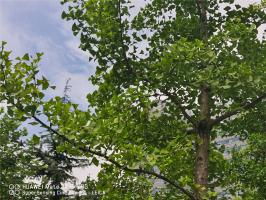What makes tomato plant leaves curl?
The sight of curled tomato leaves can be unsettling for gardeners, especially since it often signals that something is wrong with the plant. A multitude of factors can cause tomato plant leaves to curl, and identifying the cause is key to troubleshooting the issue. In this article, we will explore some of the most common reasons why tomato plant leaves curl and what you can do to prevent or fix the problem.
Environmental Stress
Environmental stress is one of the leading causes of tomato plant leaf curl. When exposed to extreme temperatures, wind, or drought, tomato plants can respond by rolling up their leaves as a protective mechanism. This curling helps the plant to conserve moisture and reduce water loss. If the curling is a result of environmental stress, it is typically temporary and should resolve on its own once the plant is removed from the stressful conditions.
Pest and Pathogen Infections
Insects and disease-causing pathogens can also cause tomato plant leaves to curl. For example, the tomato yellow leaf curl virus is a common pathogen that infects tomato plants and causes leaf curling, yellowing, and stunted growth. Aphids, spider mites, and whiteflies are some of the common pests that can also contribute to leaf curling. Infected plants must be removed and destroyed to prevent the spread of the disease or pest.
Nutrient Deficiencies
Tomato plants require a variety of nutrients to grow and thrive, and any deficiencies can result in leaf curling. For example, a lack of potassium can cause leaves to narrow and curl at the edges, while a lack of nitrogen can lead to general leaf yellowing and curling. Ensuring that your tomato plant receives the appropriate amount of nutrients is essential for preventing nutrient deficiencies and the resulting leaf curling.
Chemical Damage
Tomato plants are sensitive to chemical exposure, and pesticides, herbicides, and even fertilizers can cause leaf curling. Over-fertilization, in particular, can lead to leaf curling and burning, as it can create toxic soil conditions. Always follow instructions when using chemicals in or around your garden, and avoid using products that are known to be harmful to tomato plants.
Cultural Practices
Finally, cultural practices such as improper watering or planting can also contribute to tomato plant leaf curling. Overwatering, for example, can cause root rot and lead to leaf curling. Planting tomato plants too close together can also cause overcrowding, which can lead to nutrient deficiencies and increased pest and disease pressure.
In conclusion, if you notice tomato plant leaves curling, it is crucial to identify the underlying cause and take appropriate measures to address the problem. By following best practices for tomato plant care, including proper watering, fertilization, and pest management, you can keep your plants healthy and prevent leaf curling from occurring.

 how many times do yo...
how many times do yo... how many planted tre...
how many planted tre... how many pine trees ...
how many pine trees ... how many pecan trees...
how many pecan trees... how many plants comp...
how many plants comp... how many plants can ...
how many plants can ... how many plants and ...
how many plants and ... how many pepper plan...
how many pepper plan...





























